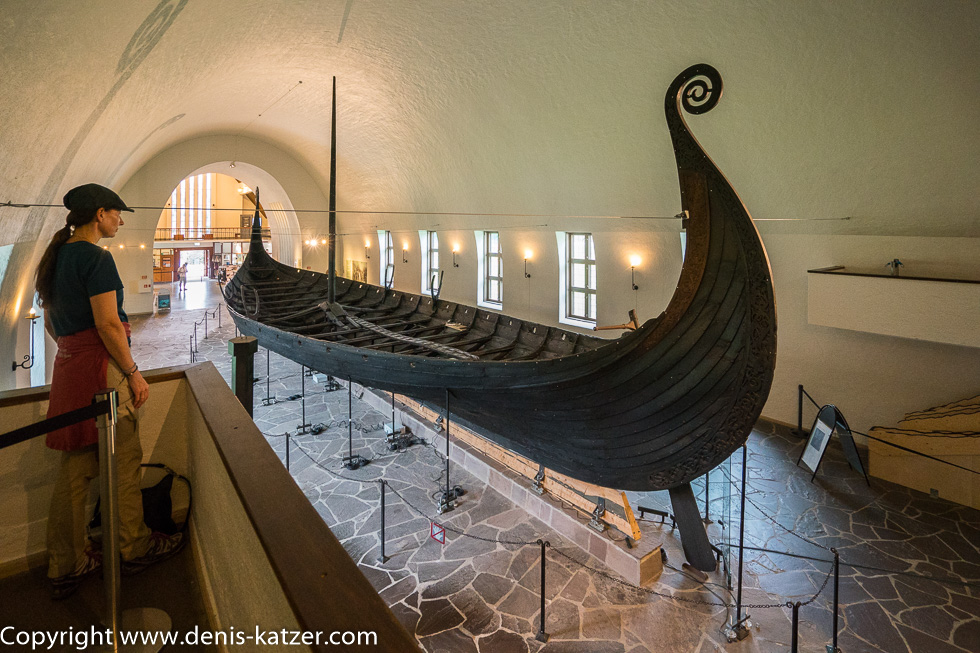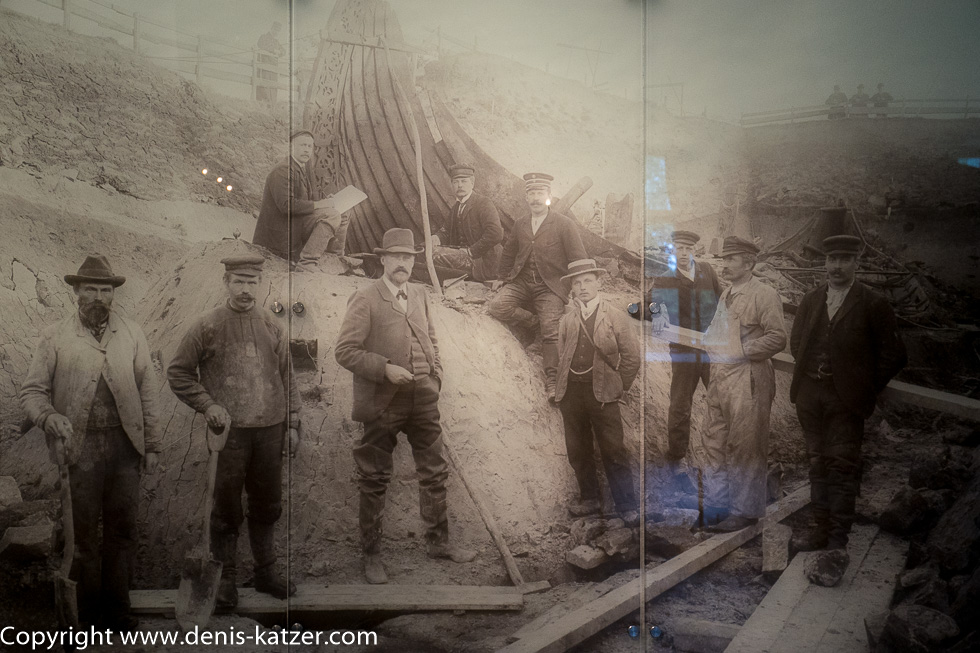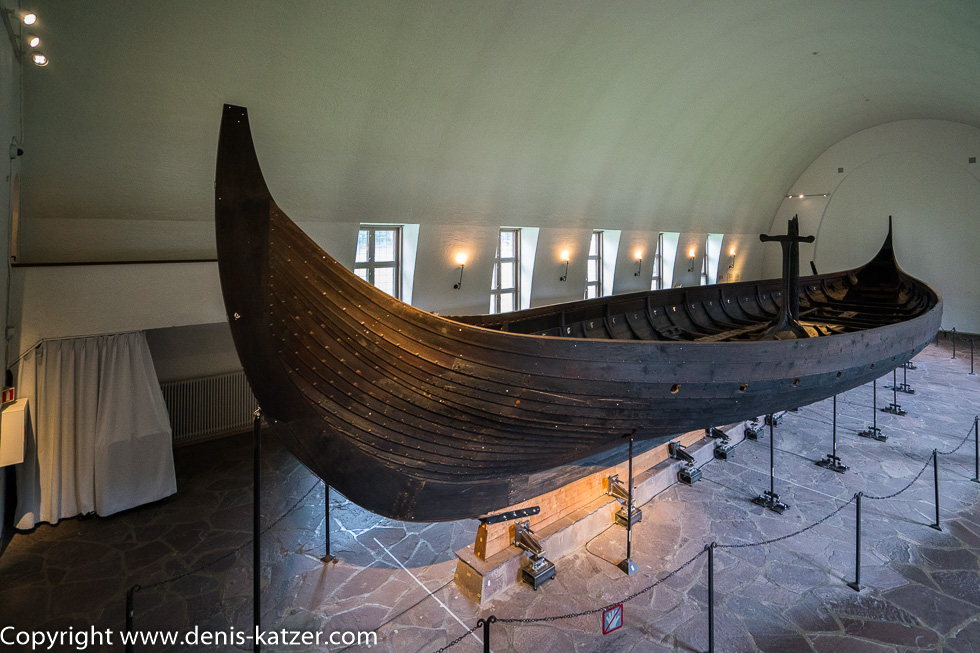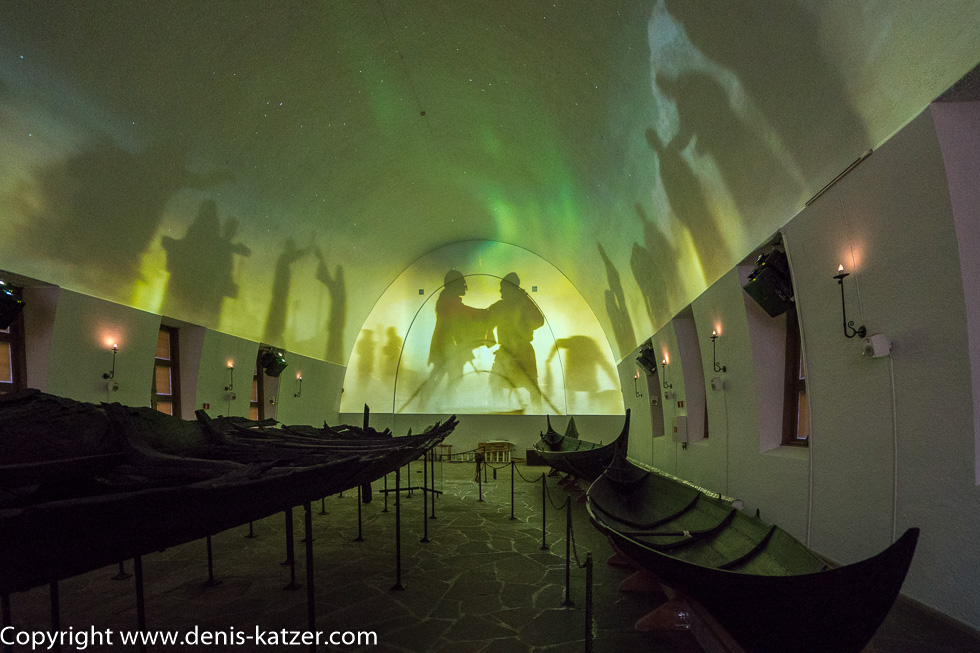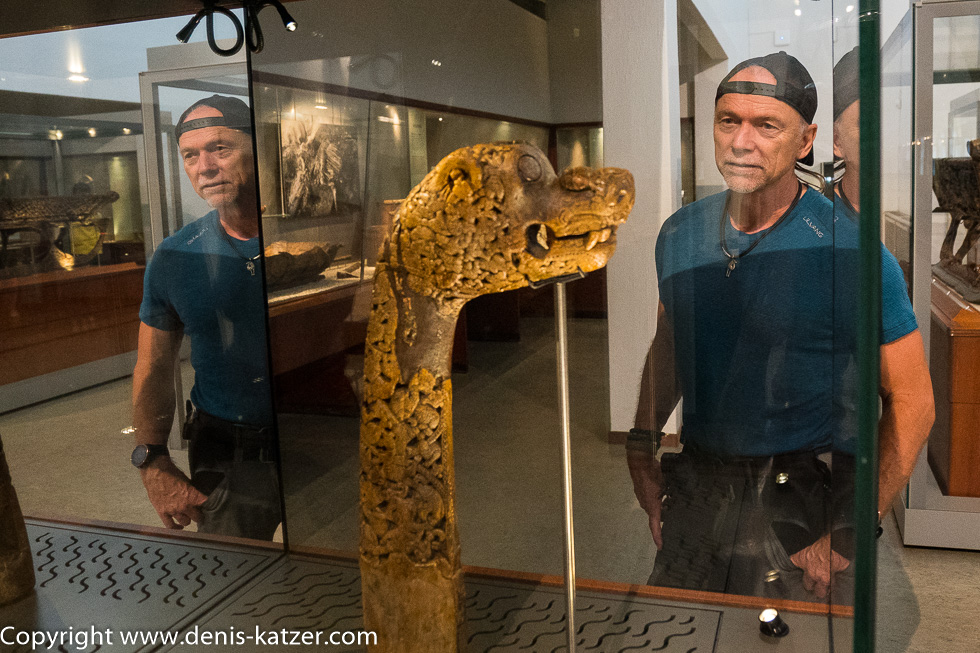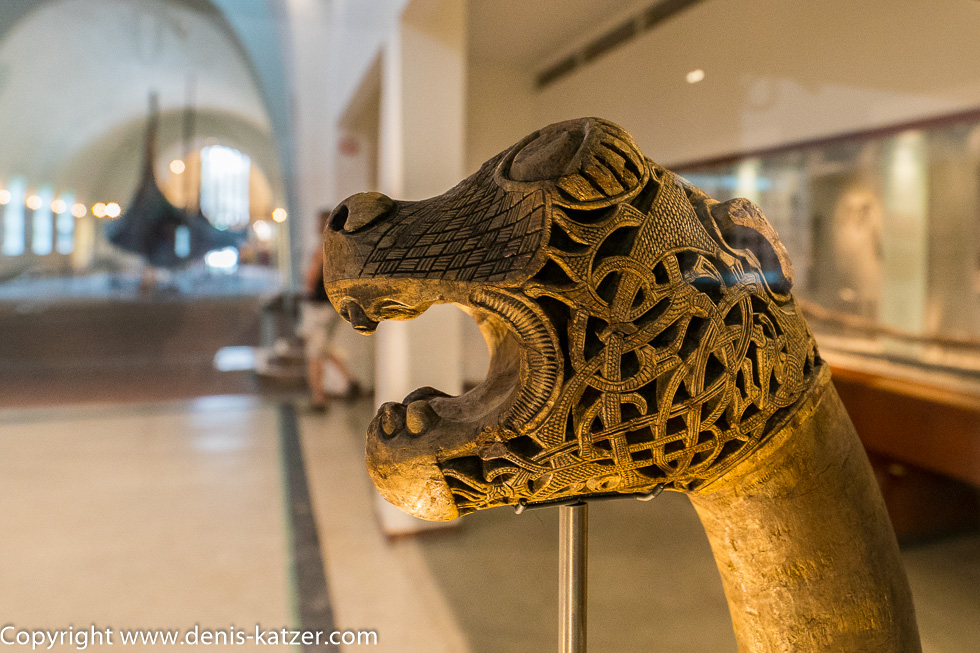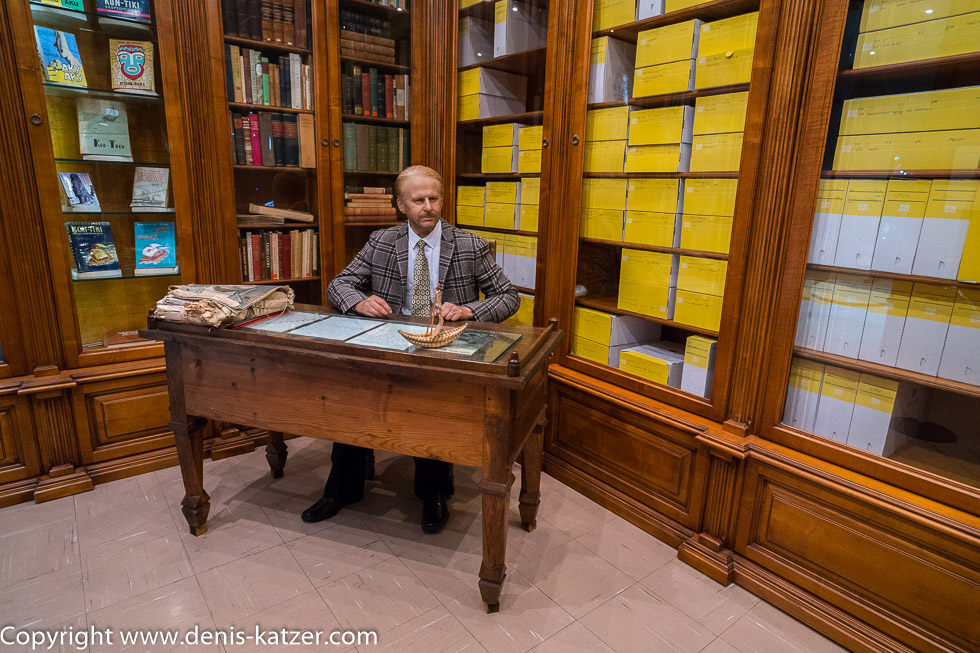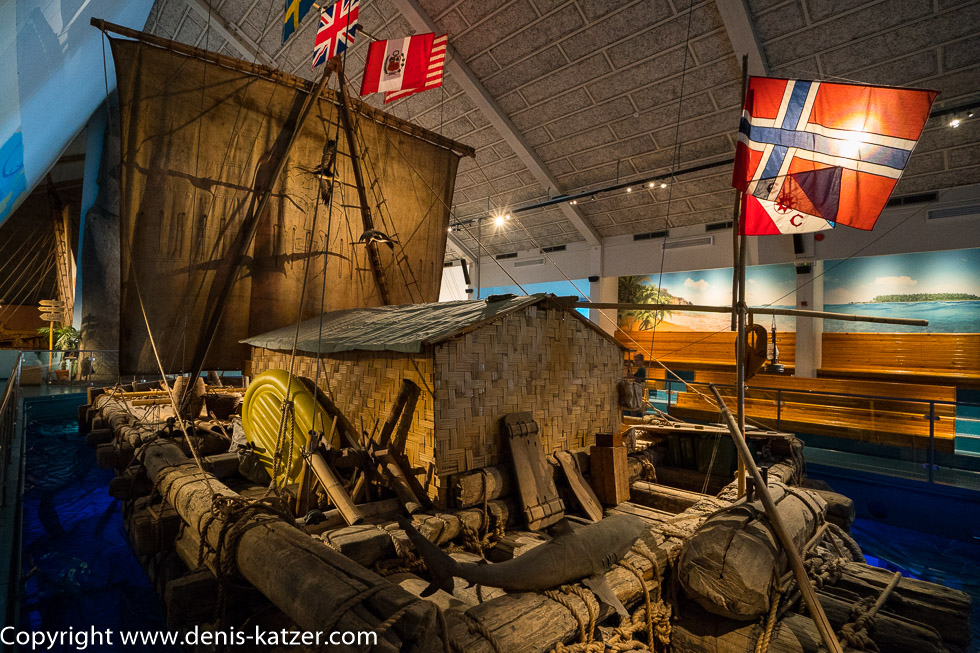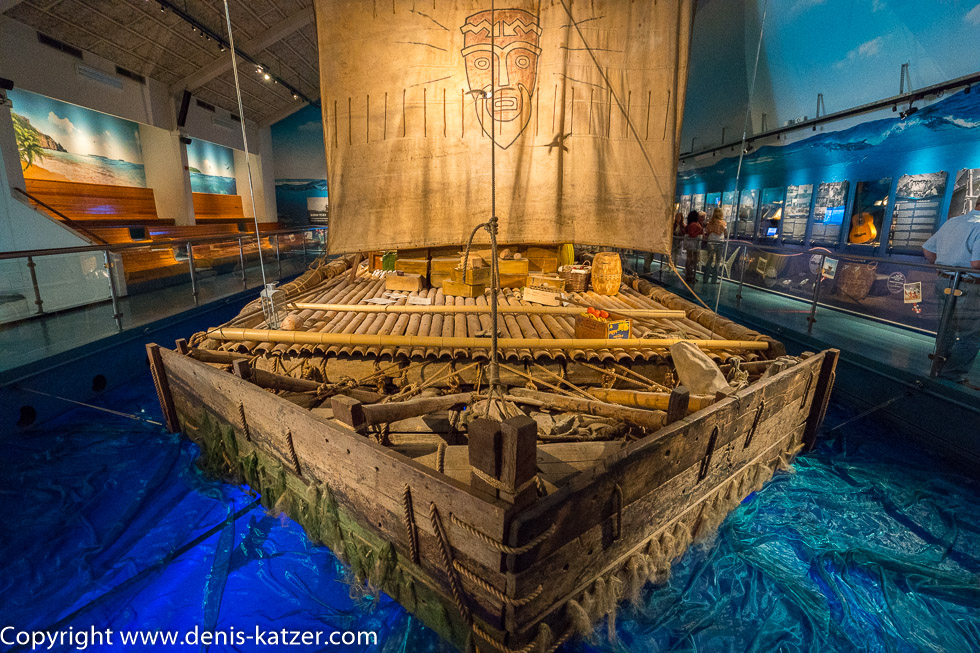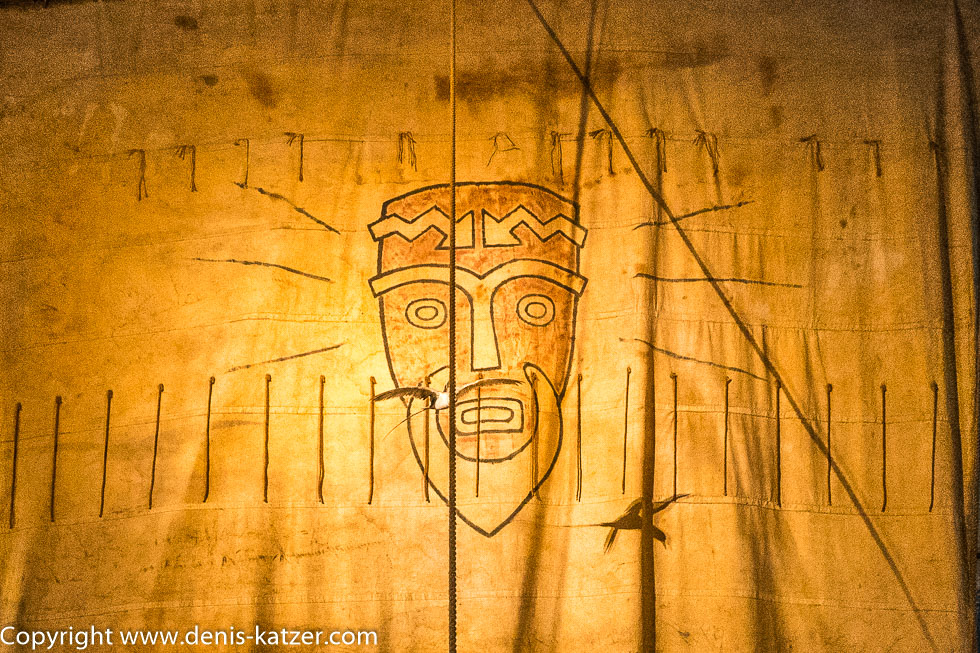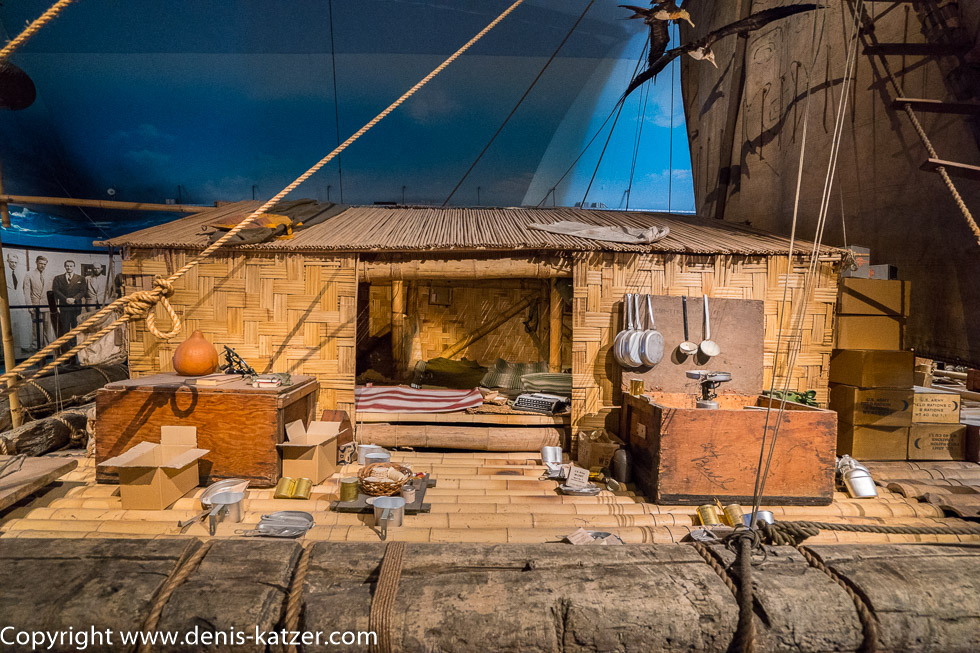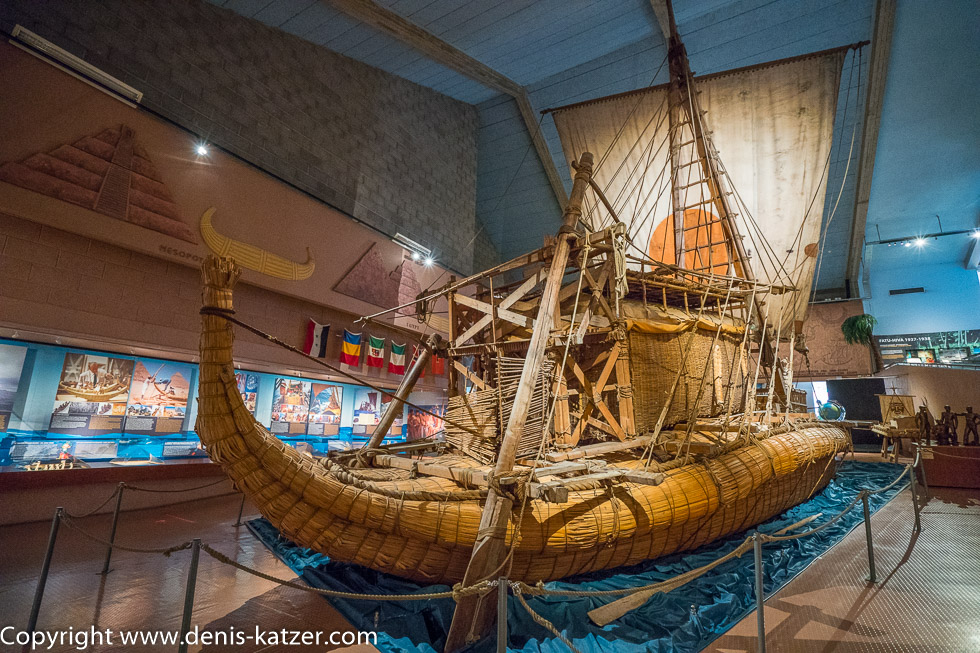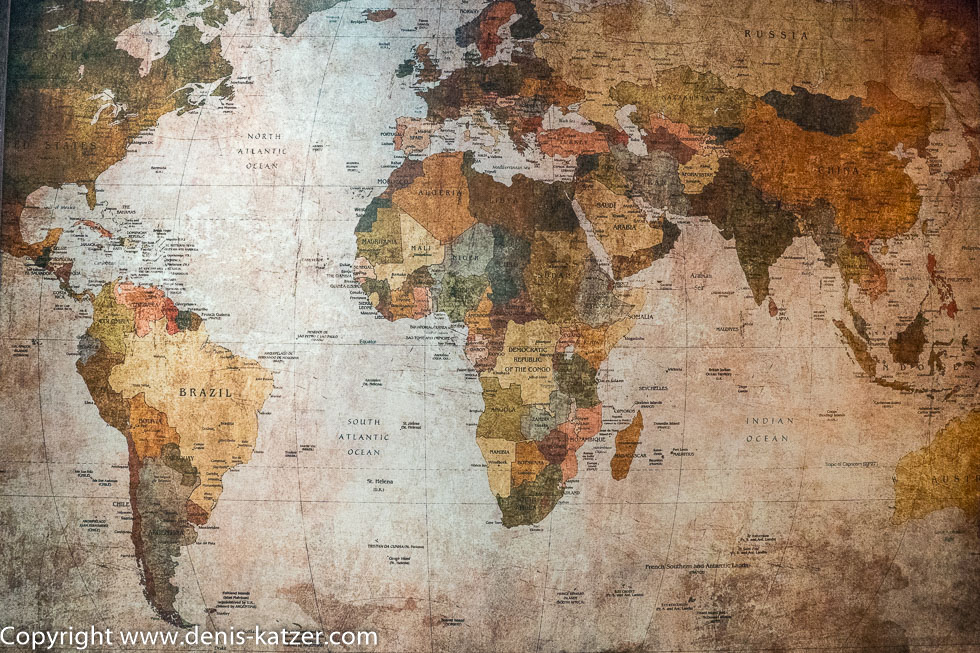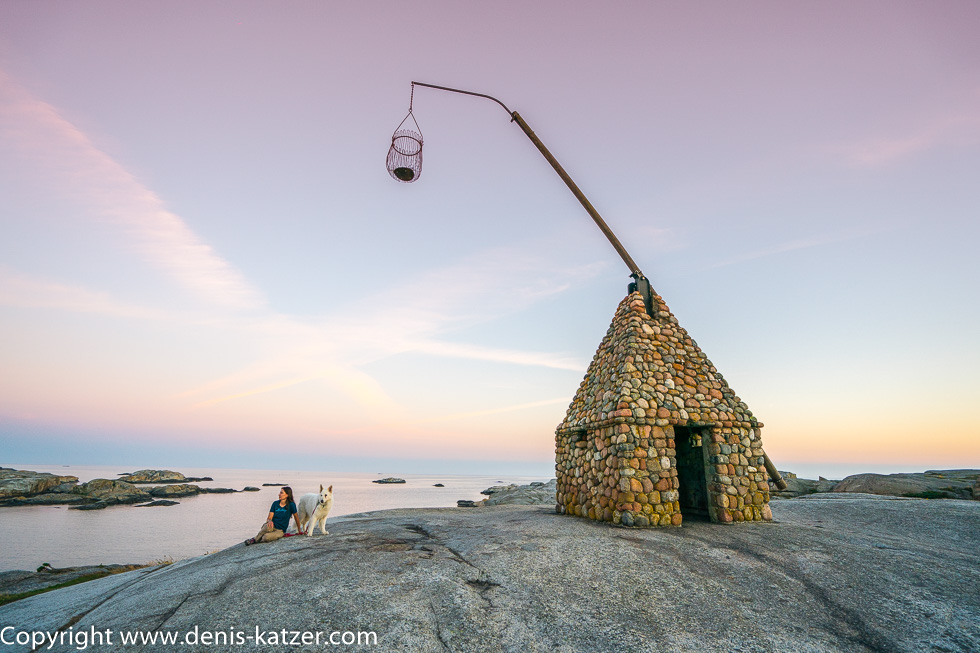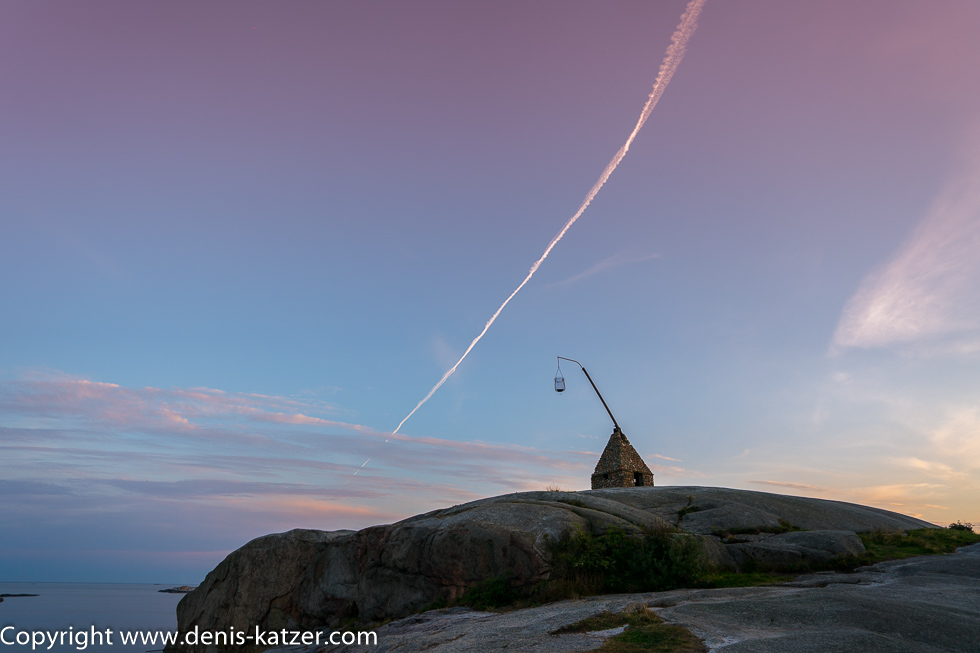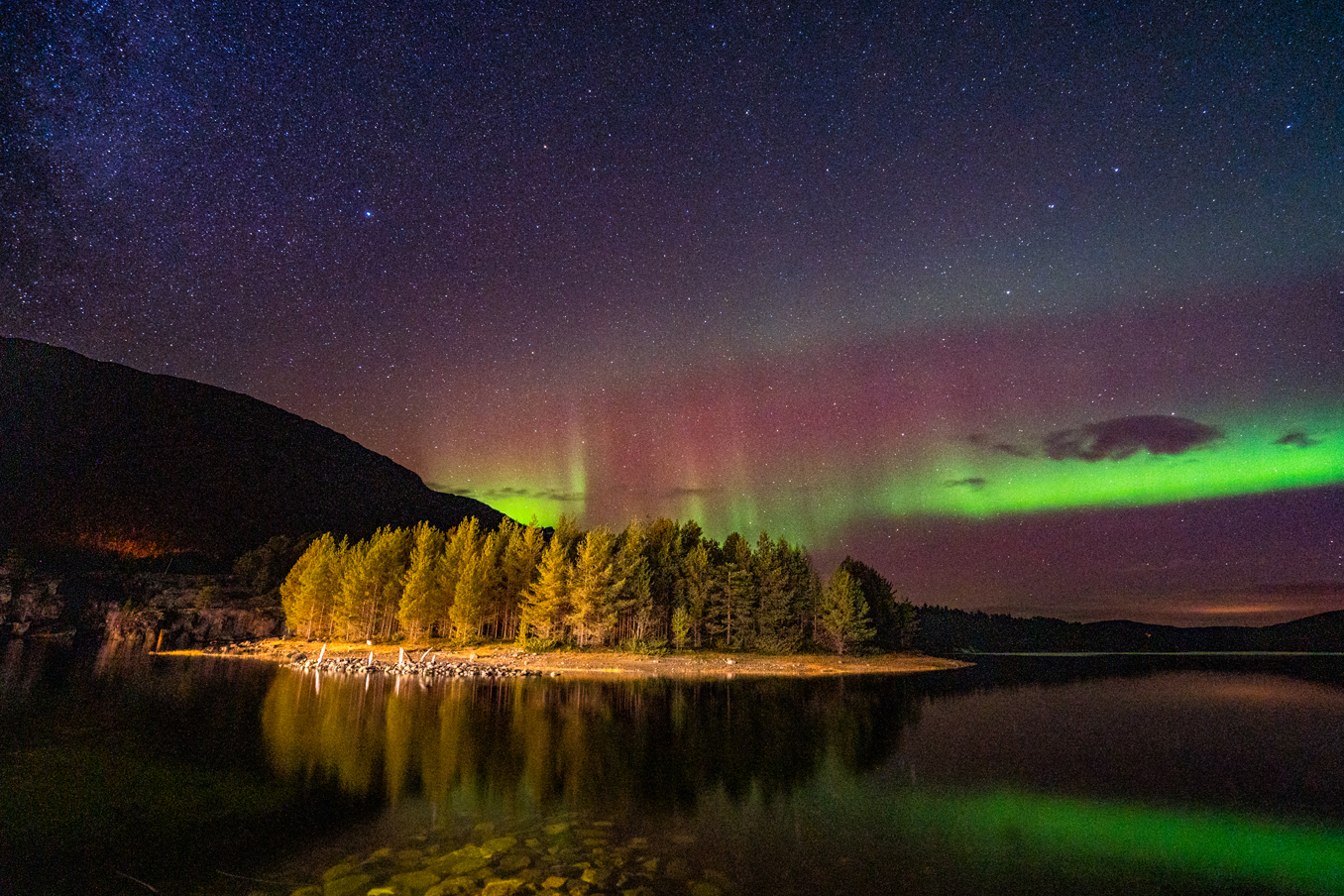
1100 years preserved, land of signs and at the end of the world
N 59°03'55.2'' E 010°24'24.3''
Date:
16.08.2020
Day: 014
Country:
Norway
Location:
Verden’s end
Daily kilometers:
144 km
Total kilometers:
1802 km
Travel time:
3 1/2 hrs.
Soil condition:
Asphalt
Sunrise:
05:35 h
Sunset:
21:11
Temperature day max:
20°
Temperature day min:
16°
Departure:
5:00 pm
Arrival time:
9:30 p.m.
(Photos of the diary entry can be found at the end of the text).
Click here for the podcast!
Link to the current itinerary
(For further contributions click on one of the flags in the map)
“Look at that, simply incredible,” I marvel as I gaze at one of the best-preserved Viking ships in the world. “It’s hard to believe that a wooden ship like this hasn’t completely disintegrated after lying underground for 1,100 years,” Tanja also marvels. “It was because the Vikings buried the ships they gave to their chieftains and high-ranking figures in damp earth and covered them with clay and peat,” I reply, pointing to the explanation on one of the information boards. “They apparently already knew how to preserve wood for a long time back then,” says Tanja. “Yes, people living on this earth today are often quite full of themselves. Many think that people had little or no idea a thousand years ago. However, people had a lot of knowledge in the past, perhaps more than we realize today,” I reflect. “Who knows how people will wonder in a thousand years’ time about the level of knowledge of the peoples living today?” “Who knows whether in a thousand years’ time there will be anything left of the inhabitants of the 21st century?” I reply. “What do you mean?” “Well, if the leading nations continue to engage in such a massive arms race and invest billions in their armies and weapons of mass destruction, there could well be nothing left to dig up after an escalation.” “Don’t be so negative. I don’t think it will come to that,” says Tanja, walking towards the next Viking ship. After viewing other priceless burial objects such as sledges, carts, tools, implements and bridles, textiles and household items, we leave the museum in high spirits. “Off to Thor Heyerdahl,” I say energetically.
Because we can’t find a parking space at the port, we are forced to pay €7 for 1 ½ hours. At the parking machine, we are thinking about how to get rid of our money with our credit card when one of the parking attendants appears in front of our Terra Love and types something into a small device. “But you’re not going to write us up now?” I ask, hurrying over to the man. “Yes,” he replies. “We’ve only been standing at that parking machine over there for two minutes and we’re just about to pay,” I say, pointing at Tanja. “Oh sorry,” he says, striding to the next vehicle to give it an expensive ticket. “The land of prohibition signs and fines,” I say in amazement.” “That’s right, everything here is actually full of prohibition signs,” Tanja agrees. “It’s strange that a nation with only 5 ½ million inhabitants has so many rules,” I say. “Do they want to keep the many tourists under control?” Tanja ponders, “That’s certainly one reason, but the forest of signs doesn’t stop at the locals. They have to abide by them just as much. Martin told me that Norwegians are quite obedient to authority. Maybe they love all the bans?” “Oh, I don’t think so. Look at the sea of signs in Germany.” “Yes, but we are also 83 million citizens living in an area that is even slightly smaller than Norway.” “Except that Norway has a lot of mountains and therefore can’t accommodate as many people as Germany,” Tanja replies. “I don’t think one has anything to do with the other. If you drive just 10 or 15 km/h too fast here because you’ve overlooked one of the ten thousand speed limit signs, you’ll pay between 500 and 600 euros. I was recently told this by a tourist who had been caught out cold. The fines here are extremely high. There must be a reason for that. But whatever the reason, we have to be careful and stick to the rules as much as possible, otherwise it will be expensive,” I say as I enter the Kon-Tiki Museum of Norway’s most famous explorer, Thor Heyerdahl. We are immediately captivated by the fantastic atmosphere. We are standing in front of the balsa wood raft that Thor Heyerdahl and his five-man crew used to cross the Pacific from South America to Polynesia. In the historic experiment of 1947, Thor Heyerdahl proved that the pre-Columbian Indians of South America were able to cover the enormous distance of 8000 km in simple rafts with the help of the south-easterly winds and the current.
Based on Egyptian reliefs and murals and clay models found in graves, he built a papyrus boat in 1969, which he named Ra, in order to reach America with the help of the equatorial current and the north-east trade winds. “An absolutely fascinating explorer, researcher and adventurer,” I say approvingly. “Shall we visit one of the museums? There’s one just across the road,” Tanja asks me as we step back out onto the sun-drenched street after the fascinating world of Thor Heyerdahl. “I don’t know. I’d actually like to, but if we carry on at this rate, we’ll never reach the North Cape.” “Then let’s go to the end of the world.” “Yes, to the end of the world,” I repeat Tanja’s words, as this is how our destination Verdens Ende is translated in German.
When we reach the southern tip of the island of Tjøme, the sun is already low and casts its soft, fading light on a rocking beacon made of natural stone (an early navigational aid from the 18th century), a striking building that was erected there in 1932 as an advertisement for a restaurant. We sit down on a rock warmed by the sun and look out over the mirror-smooth sea and the soft pink sky, which sinks into the horizon in a deep, dark blue in the now peaceful North Sea. “What a beautiful place,” whispers Tanja, snuggling up to my shoulder. After the fireball has gone out completely, we set off to look for a place to spend the night. “There! There! That looks like you could stay there overnight,” says Tanja. We slowly drive onto the freshly mown lawn. “I’m curious to see whether we can really stand here undisturbed or whether someone will come to pick us up,” says Tanja. “I’m sure no one else is coming tonight,” I reply. We sit down in the Terra and while I feed my short notes of the day and the pictures I took into the laptop, Tanja prepares a delicious dinner. “It’s fantastic to discover the world this way,” I say, hoping that the luxury doesn’t make me too comfortable…
